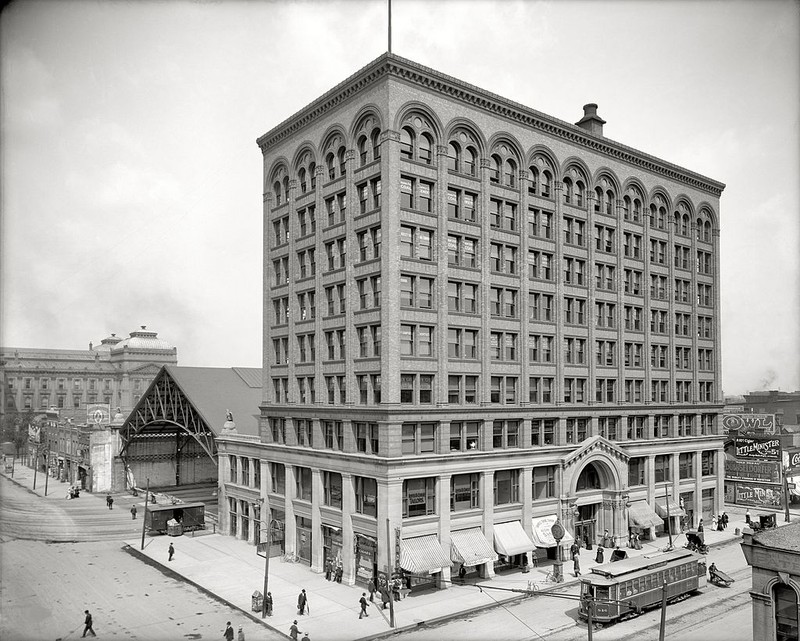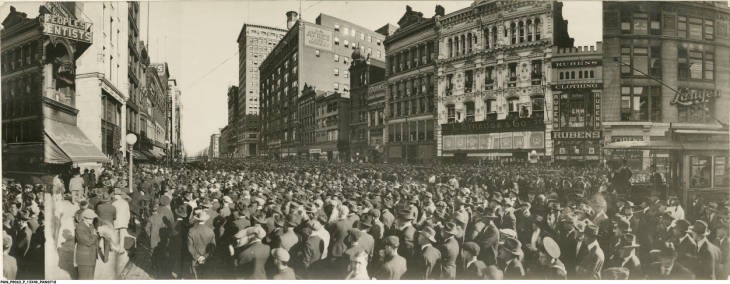Indianapolis Traction Terminal (1904-1972)
Introduction
Text-to-speech Audio
Images
This nine-story office building and railroad terminus operated until the 1960s.

In 1913, Indianapolis streetcar workers launched a city-wide strike.

Backstory and Context
Text-to-speech Audio
Tensions between the workers of Indianapolis Traction & Terminal Company and the company leaders grew shortly after the completion of this station. In 1913, workers went on strike with the support of leaders of the Amalgamated Association of Street and Electric Railway Employees of America (AASEREA). On Halloween night, 1913, the AASEREA and its members in the Indianapolis Traction & Terminal Company announced their strike for the following day and one of the largest strikes in Indianapolis history took place the following month.
On November 1, unionized streetcar operators stopped working and transportation around the city came to a complete standstill by the end of the day as the schedules couldn’t be run by the low amount of non-union workers on hand. November 2, the company brought in strikebreakers to operate the trains. In the next four days, violence was common as strikers boarded streetcars and clashed with the strikebreakers. As a result, the scheduled election on the 4th was disrupted, and with some police supporting the strikers and defying orders to stop them, the strikers appeared to have control of the city's transportation infrastructure. In response, the leaders of Indianapolis Traction & Terminal ceased operation and appealed to governor Samuel Ralston to intercede on their behalf. The governor complied and called in the Indiana National Guard, although he also acted as arbitrator in hopes of finding a mutual agreement between workers and management instead of enacting the company’s demands. Strikers agreed to a deal that met some of their initial demands, including days off, a right to unionize, and a wage increase. In return, the company retained the right to hire non-union workers.
Sources
“Ralston Says His Life Was Threatened,” Muncie Indiana State Journal, November 6, 1913. https://access-newspaperarchive-com.proxyiub.uits.iu.edu/us/indiana/muncie/muncie-indiana-state-journal/1913/11-06/page-9/indianapolis-strike?&ndt=ex&py=1913&pm=11&search=ym
“Indianapolis Strike Ends,” Daviess County Democrat (Washington, IN), November 15, 1913. https://access-newspaperarchive-com.proxyiub.uits.iu.edu/us/indiana/washington/daviess-county-democrat/1913/11-15/page-6/indianapolis-strike?&ndt=ex&py=1913&pm=11&search=ym.
